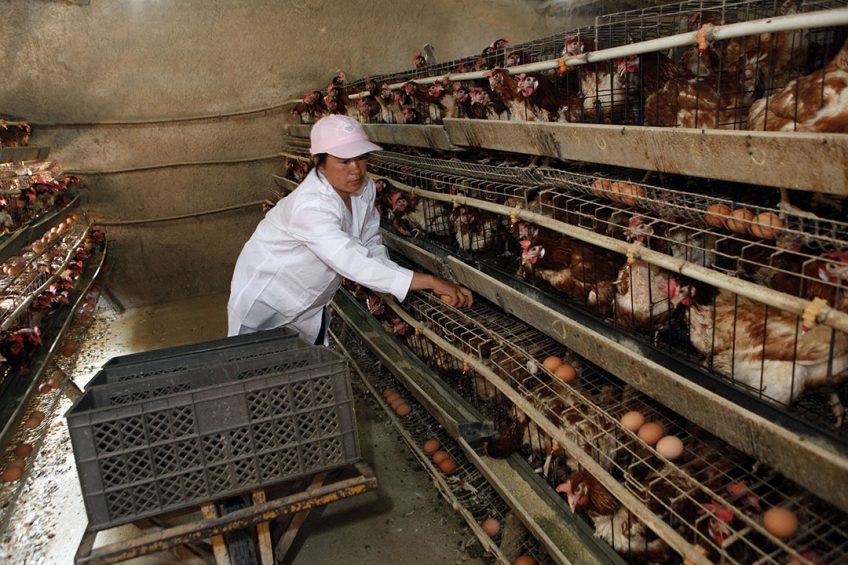Chick production: Important factors to consider

Being at the core of day-old chick production, the hatchery needs to ensure that the best quality fertile eggs are produced, as well as maintaining and running the hatchery in the most efficient, precise and bio secure environment.
Poultry World discusses points that should constantly be adhered to and monitored, in order to produce the best quality day-old chicks from your hatchery. Poultry production, being a series of specialist entities, requires that each in turn is carried out correctly, in order to achieve the ultimate goal, which is to produce a chicken of the best quality in the least time and under the optimal environmental conditions that will allow the chick to grow stress free, and perform to its maximum genetic potential. In order to achieve this, a series of events need to be strictly adhered to by all the relevant links in this production chain.
Breeders to hatching egg
Starting with the parent stock chicks, production management needs to be able to produce uniform hens at the specified body weights as well as accurately administering the required vaccinations as to the breeder’s specifications and the specific needs that may be required for your area. Males should be reared separately, or at least be segregated and achieve the correct target body weights as well as body confirmation to ensure maximum fertility. Optimum lighting patterns should be used to allow for maximum production of fertilised eggs of the required weights. Make use of the breeder’s area technical manager to advise you in all aspects. Keep your graphs up to date and advise a more senior person in your organisation if you see anything that you may think is not correct.
Communication is key and one should always seek advice from other experienced people and discuss points that you think could be relevant to your particular situation. In the process this can add to your knowledge and level of expertise. On all occasions address each situation as though each flock of birds is “your own flock” and that your livelihood depends on it. The more one can learn regarding any aspect, the easier it should make the production process that you are involved in. Always keep learning, asking and improving. This will stimulate your mind, vision, knowledge and help you to increase your stockman-ship abilities, and will take you to a higher level of management.

Temperature and RH
The percentage RH (relative humidity) and the optimum production house temperatures that are required to generate and obtain the best results should determine the type of housing required to achieve this. If one is producing in a warm climate, outside ambient temperatures of 32°C plus, accompanied with high relative humidity in the upper 75%, it may not be advisable to produce in this type of area unless controlled environment housing is in place. Although this can be partly accomplished, it will however more than likely, be at an increased production cost, resulting in a lower financial margin.
High ambient temperatures and RH % can result in lower production, reduced fertility, as well as poor litter quality, which can and often does lead to higher levels of susceptibility to certain sicknesses and or disorders. These can include coccidiosis which can result from damp litter due primarily to the high load of moisture in the incoming air. Vaccination reactions, respiratory tract problems can also occur with the combination of high temperature and high humidity. Stress related problems can increase the probability of the stock succumbing to other viruses and or bacteria that may be latent and this is then triggered by the stress factor. Quite often this is as a result of damp or wet litter conditions, however poor litter quality can also be caused by water lines that are leaking due to poor equipment condition, incorrect water pressure (too high), being set at the incorrect height to name a few.

Water consumption
Higher than optimal levels of salt in the feed will result in increased water intake and also cause damp litter resulting in higher mortality, respiratory problems to name just two. It is very important to check the water consumption on a regular basis and establish a usage pattern. When using a properly set up controlled environment house there should be minimal variation in water usage during different seasonal times as the house conditions should not vary except as a result of an adverse management change which should, if it does occur, most likely be related to a relief worker. Keep accurate records of personnel on duty on a daily basis.
Egg collection
The fertile eggs produced need to be collected frequently and the eggs transferred to an egg holding facility where the egg temperature is required to be kept at 24°C. This temperature is “Psychological Zero” and at temperatures above this, embryonic development will occur. This needs to be carried out within two hours of collection in order to prevent development taking place. Egg collection should be carried out at least five to six times per day. Perhaps more frequently and this will depend on the type of housing that is in use. Relative humidity is also important and the house should be maintained at a level of 65% to 70%. If the house temperature is increased, it will cause embryonic development to commence even if this is for only a few hours in a warm breeding house or a warm transportation vehicle.
Where open type housing is being used and especially if much higher summer temperatures prevail, lighting programmes need to be initially implemented that will allow the majority of the eggs to be produced in the earlier and cooler period of the day to enable them to be held at the correct temperature, before collection and transporting to the hatchery. If necessary this can be achieved by starting their day at an earlier time which will result in egg being laid earlier in the day which will facilitate this earlier collection. Needless to say that the transport vehicles need well insulated bodies and functional cooler units to maintain the temperature at 24°C and incorporate a humidifier unit for optimal control. Depending on the time factor required to transport the eggs to the hatchery will facilitate the necessity of this. Certainly if transport time is in excess of 30 minutes and also depending on the vehicle body insulation will be a determining factor. Why produce a good product and neglect the cost of this equipment, cutting corners in your production costs is just not on!

Timing
The hatchery manager is now satisfied that the eggs that he is receiving have been produced, collected and held (stored), in the correct manner and in optimum conditions as well as being delivered as such. This will ensure that he can concentrate on doing the best possible job to manage the hatchery correctly. This will enable him to hatch the maximum number of uniform top quality chicks from the eggs he receives. Timing is critical, from the time the eggs are received until they are set in the machines. If done immediately after arrival and not allowing them adequate time to settle, this can result in lower hatching results as well as malpositioning of the embryos which will adversely affect the the hatch, in terms of numbers and chick quality.
| Practical points to consider – Paper pulp egg trays retain heat and the eggs can become even warmer if sitting in an incorrect place in the laying house, for example in a corner, in an open naturally ventilated house especially if direct sunlight enters where the trays ate stacked. After collection the eggs should be removed to the egg cooling /storage room as soon as possible. If the eggs are still warm after being laid,(32-34°C) and placed into the pulp trays, they will absorb and retain some of this heat and this will take longer for them to cool down. |
Join 31,000+ subscribers
Subscribe to our newsletter to stay updated about all the need-to-know content in the poultry sector, three times a week. Beheer
Beheer











 WP Admin
WP Admin  Bewerk bericht
Bewerk bericht